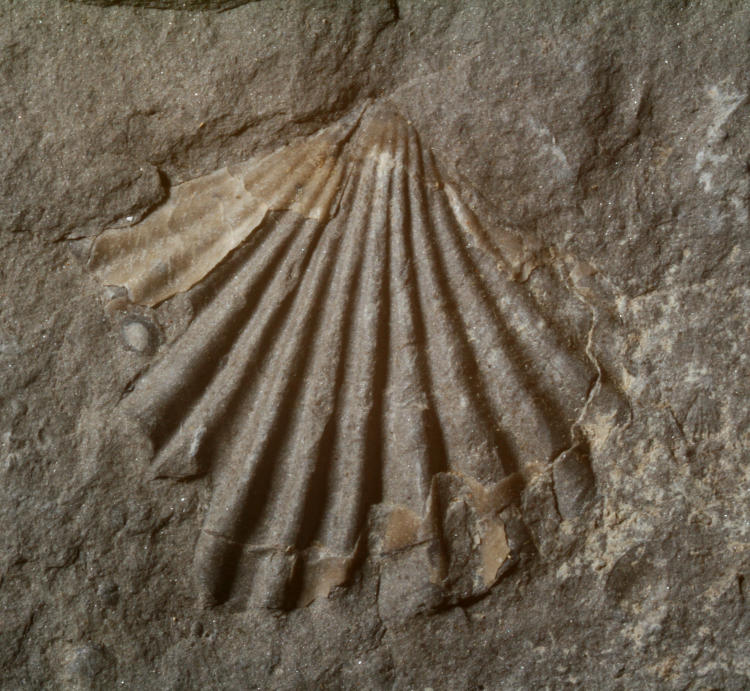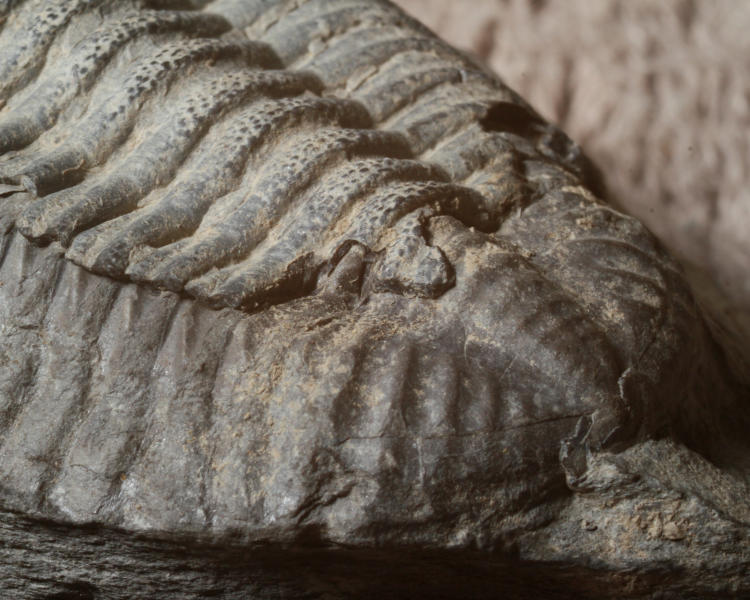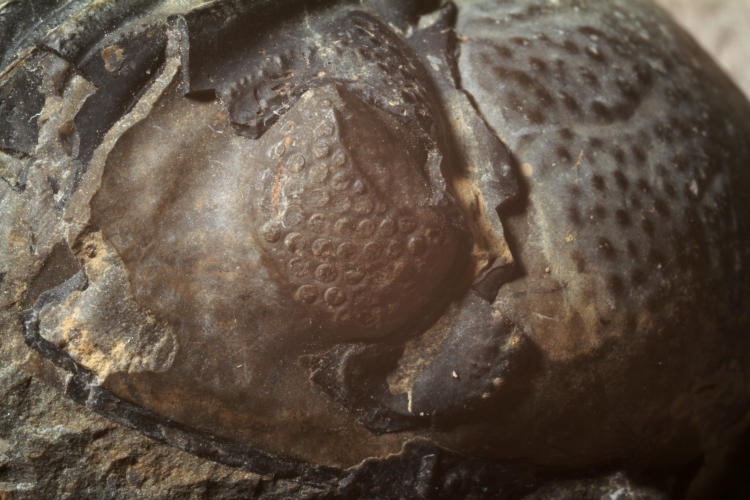Just a quick one here. When my brother came to visit for the second time, he brought with him some of his fossil finds from central New York, ones with really intricate detail. We didn’t have the time to tackle detailed photos while he was here, so he left them with me for the time being, and I finally got the chance to feature them, with both still photos and video, which shows the contours better as the piece rotates around.
[The background noise was too horrendous to use on-camera audio, and even the voiceover had a bit too much noise creeping in from other things happening in the office. I cleaned it the best I could, but it sounds a little overcompressed and thumpy at times, and I apologize.]
And now, a closer look at some of the details.

This is the tail shield of the small, distinct trilobite tail shield, with different lighting. You can see along the right side the change in shape and textures, likely indicating that we’re now seeing the bottom layer of the shield, the underside seen from the top. You can also see how the top layer has eroded away. The entire shield is 18mm wide.
Some of the accompanying shellfish:

This is the largest of the scallop (or scallop-like) impressions near the above trilobite, and you can see that portions of the actual shell, unless I’m mistaken, are intact around the edges.
More impressions from the same piece of shale:

These are quite small, and I didn’t realize myself how many there were clustered together until I got the lighting on them at this angle. Again, there may be meters of shale layers, thousands of years of deposits, with only a few centimeters at best that are abundant with fossils – it’s all down to the right conditions, which aren’t common at all.

Nice look at the layers of one of the larger specimens, with some textures thrown in. The layers of the trilobite’s shell are roughly 2mm thick.

This is a closeup of the back of the largest and most detailed fossil. Lots going on in there, and sorely tempting to try and open up to see even more within, though the chances of damaging and fragmenting it are quite high. Like I said, my brother can tackle it if he wants to – I ain’t doing it.
And finally,

This is the eye of the largest, showing the very distinct color change from within the eye, or at least under the molted exoskeleton, but given that none of the surrounding rock shows this color, I’m inclined to believed this is a whole specimen and you’re seeing the fossilized remains of its internal structure, with the exoskeleton around the outside edges of the frame like a cutaway drawing. This eye is 8mm across.
By the way, while it’s easy to believe that the upper surface of the sphere of the compound eye has broken away, leaving this flattened spherical shape, looking at other examples supports the idea that the eyes were actually shaped like this, flattened on top while maintaining a more laterally-oriented field of view. From this, I would surmise that there weren’t that many predators approaching from above, but listening to the uneducated is pretty stupid, really. While we’re at it though, notice how few facets to the compound eyes there are, as compared to most insects today, sporting magnitudes more, and closer together, while being far smaller than this. Of course, I’m trying to determine details of anatomy from a mineral replica of the original, without that education, so, again, heed me not. I’m just here to show you want it looks like, not inform you about it. Sheesh.




















































